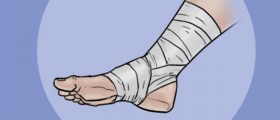When is Wrist Tendonitis Surgery Used?
Tendonitis is an inflammation of the tendons. Tendons are strong cords of fibrous tissue that connect a muscle to the bone so that the bone is pulled or pushed when the muscle contracts, and there is movement in the corresponding joint. Tendonitis can occur for various reasons, and some typical reasons include overuse (like in sports injuries, when a high level of stress is exerted on the tendon) or repetitive stress injury when small amounts of stress affect the tendon over long periods.
- A single-arm interventional study was conducted on individuals with WP applying for a digital care programs (DCP). Primary outcome was the mean change in the Numerical Pain Rating Scale after 8 weeks (considering a minimum clinically important change of 30%).
- Secondary outcomes were: disability (Quick Disabilities of the Arm, Shoulder, and Hand questionnaire), analgesic intake, surgery intention, mental health (patient health questionnaire [PHQ-9] and generalized anxiety disorder [GAD-7]), fear-avoidance beliefs (FABQ-PA), work productivity and activity impairment, and engagement.
- From 189 individuals starting the DCP, 149 (78.8%) completed the intervention. A significant pain improvement was observed (51.3% reduction (2.26, 95% CI 1.73; 2.78)) and 70.4% of participants surpassing minimum clinically important change. This change correlated with improvements in disability (52.1%), FABQ-PA (32.2%), and activities impairment recovery (65.4%).
- Improvements were also observed in other domains: surgery intent (76.1%), mental health (67.0% in anxiety and 72.7% in depression), and overall productivity losses (68.2%). Analgesic intake decreased from 22.5% to 7.1%. Mean patient satisfaction score was 8.5/10.0 (SD 1.8).
Generally, tendon inflammation is treated conservatively. The tendon is allowed to rest (an activity that caused the inflammation should be avoided, which may include giving up a hobby, an activity, or taking some time off the job), and anti-inflammatory drugs and painkillers are administered if recommended. Physical therapy can be used to strengthen the muscle to which the inflamed tendon belongs and to stretch and exercise the tendon.

If these methods fail to bring improvement, then immobilizing devices such as wrist splints or braces are used. A cortisone injection is the last line of defense against pain. Its effect will wear off eventually, and if all mentioned methods failed to do any good, surgery becomes an option.
Surgical procedure includes making an incision in the skin and exposing the inflamed tendon. The inflamed and scarred sections of the tendon are scraped off, along with some healthy tendons.
Surgery methods for wrist tendonitis include (classical) open surgery with large incisions and laparoscopic surgery, where everything is done with as little and as small incisions as possible, like building a model ship in a bottle. Still, the problem with surgery is that it does not cure the cause, but, tries to remove the consequence.
Also, recovery time from the surgery is very slow. The catch is that tendons have a poor blood supply and therefore heal (rebuild) very, very slowly. It could take months or years before the tendon that has been tampered with is back to its old self.
Recovery Process
As noted, it takes a long time for the tendon to heal. Immediately after the operation, for a few days, according to the surgeon's advice, you might be using painkillers and anti-inflammatory medicines to dull the pain in the cut tissue. The cut tissue must heal and should be resting for some time so that the newly built connections in the tissue are not torn.
Your level of activity should gradually increase, and you should exercise constantly, to return strength and flexibility to both the muscle and tendon. The success rate of this surgery is high, but unfortunately, some people will need to repeat the surgery as the symptoms may return after some time.
- www.nhs.uk/conditions/hand-tendon-repair/
- www.nhs.uk/conditions/hand-tendon-repair/recovery/
- Photo courtesy of plastische_erasmusmc by Wikimedia Commons: commons.wikimedia.org/wiki/File:Wrist_related_tenodesis_effect,_second_step.JPG

















Your thoughts on this
Loading...